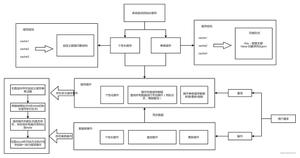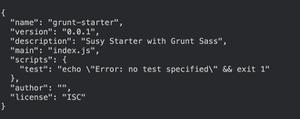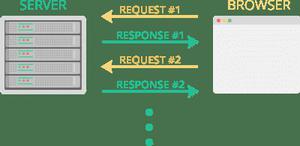SpringBoot2.X实战SpringBoot整合Redis

源代码仓库:https://github.com/zhshuixian/learn-spring-boot-2
码云:https://gitee.com/ylooq/learn-spring-boot-2
在上一节我们主要实现了 Spring Boot 全局异常处理,这一小节主要是内容为 Spring Boot 整合 Redis ,将实现如下两个内容:
- Spring Boot 直接操作 Redis ,实现 K-V NoSQL 的 set 和 get
- Spring Boot 的数据库缓存
1、Redis 的简介和安装
Redis 是互联网应用最为广泛的、最为我们所熟知的 NoSQL 数据库,是存储系统中应用最为广泛的中间件。
Redis 是一个开源(BSD许可)的,内存存储的数据结构服务器,可用作数据库,高速缓存和消息队列代理等。 它支持多种类型的数据结构,如 字符串(strings), 散列(hashes), 列表(lists), 集合(sets), 有序集合(sorted sets)。内置复制、Lua 脚本、LRU 收回、事务以及不同级别磁盘持久化功能,同时通过 Redis Sentinel 提供高可用,通过 Redis Cluster 提供自动分区。「参考文献 1」
1.1、Redis 使用场景
在微服务和分布式兴起后,Redis 在互联网公司的应用越来越广泛,使用场景也越来越多:
- 缓存:这是 Redis 使用最多的领域,Redis 将所有的数据直接存在内存中,其访问速度远远快于如 MySQL 等需要从硬盘查询的数据库,如果将 SQL 中常用的数据写入缓存,可以极大的提高系统的性能,减缓数据库的压力。同时也可以通过 Redis 缓存实现跨进程数据的共享;
- 持久化:例如:对于各个微服务组件来说,自带的 Session 机制并不能跨进程共享,如果将 Session 写入 Redis,既可以实现不同微服务进程的 Session 共享,通过 Redis 持久化到硬盘中,可以避免因服务器宕机重启等导致服务器 Session 丢失;
- 分布式锁:对于进程间共享的数据,需要通过锁的方式避免脏数据的产生,可以利用 Redis 单线程的特性,实现共享数据的加锁和释放;
- 发布、订阅:没错,Redis 是可以用作轻量级的消息队列的;
- 更多:接口访问的限制、缓存用户的行为历史、内容点赞数量、排行榜等
1.2、Redis 的安装
这里使用 Linux,对于 Windows 平台,可以使用 WSL 或者虚拟机安装个 Linux 发行版。
# 安装编译所需的软件sudo apt install gcc g++ make
Redis 官网:https://redis.io/download
# 下载 Redis wget http://download.redis.io/releases/redis-5.0.8.tar.gz
tar -xvf redis-5.0.8.tar.gz
cd redis-5.0.8
# 编译
mark
Redis 的简单配置:vim redis.conf
# 添加, Redis 密码,默认为空requirepass springboot
# 注释掉 bind,允许远程访问,或者空格隔开添加运行远程访问的 ip
# bind 127.0.0.1
# 修改为 no,保护模式关闭,允许通过 IP 访问
protected-mode no
Redis 启动
# 后台以服务的方式运行src/redis-server redis.conf --daemonize yes
# 使用密码登录默认端口号 6379
src/redis-cli -p 6379 -a springboot
# 写入 Key = name,value = springboot
127.0.0.1:6379> set name springboot
OK
127.0.0.1:6379> get name
"springboot"
127.0.0.1:6379> del name
(integer) 1
127.0.0.1:6379> get name
(nil)
127.0.0.1:6379>exit
# 关闭 Redis 服务,并把数据保存到硬盘
./src/redis-cli -p 6379 -a springboot shutdown save
2、开始使用 Redis
新建项目 10-spring-boot-redis,添加如下依赖:
// Gradleimplementation "org.springframework.boot:spring-boot-starter-data-redis"
implementation "org.springframework.boot:spring-boot-starter-web"
testImplementation "org.springframework.boot:spring-boot-starter-test"
implementation "org.mybatis.spring.boot:mybatis-spring-boot-starter:2.1.1"
// 刚开始是 MyBatis,但缓存部分写的有问题,删掉换了 JPA,最后有加上了 MyBatis,所以有两个
implementation "org.springframework.boot:spring-boot-starter-data-jpa"
runtimeOnly "mysql:mysql-connector-java"
文件 application.properties 的配置 Redis 连接、MySQL 连接,MyBatis、JPA
# Redis host ipspring.redis.host=wsl
# Redis 服务器连接端口
spring.redis.port=6379
# Redis 数据库索引(默认为 0)
spring.redis.database=0
# Redis 服务器连接密码(默认为空)
spring.redis.password=springboot
#连接池最大连接数(使用负值表示没有限制)
spring.redis.jedis.pool.max-active=8
# 连接池最大阻塞等待时间(使用负值表示没有限制)
spring.redis.jedis.pool.max-wait=-1
# 连接池中的最大空闲连接
spring.redis.jedis.pool.max-idle=8
# 连接池中的最小空闲连接
spring.redis.jedis.pool.min-idle=0
# 连接超时时间(毫秒)
spring.redis.timeout=500
# 使用 Redis 缓存
spring.cache.type=redis
# 数据库 URL、用户名、密码、JDBC Driver更换数据库只需更改这些信息即可
# MySQL 8 需要指定 serverTimezone 才能连接成功
spring.datasource.url=jdbc:mysql://localhost:3306/spring?useUnicode=true&characterEncoding=utf8&serverTimezone=UTC
spring.datasource.password=xiaoxian
spring.datasource.username=root
spring.datasource.driver-class-name=com.mysql.cj.jdbc.Driver
# Hibernate 的一些配置
spring.jpa.database-platform=org.hibernate.dialect.MySQL5InnoDBDialect
# 是否在 Log 显示 SQL 执行语句
spring.jpa.show-sql=true
# hibernate.ddl-auto 配置对数据库表的操作
spring.jpa.hibernate.ddl-auto=none
# MyBatis 驼峰命名转换
mybatis.configuration.map-underscore-to-camel-case=true
# 显示 Mybatis 的 SQL,Mapper 所在的包打印 debug 级别的代码
logging.level.org.xian.redis.repository=debug
启动类 RedisApplication.java 配置 MyBatis mapper 和 启用缓存配置。
@SpringBootApplication@EnableCaching
@MapperScan("org.xian.redis.repository")
public class RedisApplication ......
2.1、Redis 的配置
新建 RedisConfig.java
@Configuration@AutoConfigureAfter(RedisAutoConfiguration.class)
public class RedisConfig {
@Bean
public RedisCacheConfiguration cacheConfiguration() {
// 设置缓存过期时间为 120 秒后
return RedisCacheConfiguration.defaultCacheConfig().entryTtl(Duration.ofSeconds(120)).disableCachingNullValues();
}
@Bean
public RedisCacheManager cacheManager(RedisConnectionFactory factory) {
// 使用 RedisCacheManager 作为缓存管理器
return RedisCacheManager.builder(factory).cacheDefaults(cacheConfiguration()).transactionAware().build();
}
@Bean
public RedisTemplate<String, Object> redisTemplate(RedisConnectionFactory redisConnectionFactory) {
// Jackson 序列方式
Jackson2JsonRedisSerializer<Object> jackson2JsonRedisSerializer = new Jackson2JsonRedisSerializer<>(Object.class);
ObjectMapper om = new ObjectMapper();
// Jackson 默认自动识别 Public 修饰的成员变量、getter、setter
// private、protected、public 修饰的成员变量都可以自动识别,无需都指定 getter、setter 或者 public。
// 参考 https://blog.csdn.net/sdyy321/article/details/40298081
om.setVisibility(PropertyAccessor.ALL, JsonAutoDetect.Visibility.ANY);
// 对于 8 种基本数据类型及其封装类和 String ,其他的类型在序列化的时候带上该类型和值
// 参考 https://www.jianshu.com/p/c5fcd2a1ab49
om.enableDefaultTyping(ObjectMapper.DefaultTyping.NON_FINAL);
jackson2JsonRedisSerializer.setObjectMapper(om);
RedisTemplate<String, Object> template = new RedisTemplate<>();
// Redis 链接
template.setConnectionFactory(redisConnectionFactory);
// Redis Key - Value 序列化使用 Jackson
template.setKeySerializer(jackson2JsonRedisSerializer);
template.setValueSerializer(jackson2JsonRedisSerializer);
// Redis HashKey - HashValue 序列化使用 Jackson
template.setHashKeySerializer(jackson2JsonRedisSerializer);
template.setHashValueSerializer(jackson2JsonRedisSerializer);
template.afterPropertiesSet();
return template;
}
@Bean
@ConditionalOnMissingBean(StringRedisTemplate.class)
public StringRedisTemplate stringRedisTemplate(
RedisConnectionFactory redisConnectionFactory) {
StringRedisTemplate template = new StringRedisTemplate();
template.setConnectionFactory(redisConnectionFactory);
return template;
}
}
默认的 RedisTemplate 为 RedisTemplate<Object, Object>,即 Key 和 Value 都是泛型,将 key 自定义为 String。
使用 Jackson 作为序列化工具,原因是其默认使用 JdkSerializationRedisSerializer ,其序列化为二进制存储进 Redis,不利于查看原始内容。使用 JSON 作为序列化工具,其他编程语言也可以方便的访问。
2.2、Redis 的 get 和 set
这里将演示通过 RedisTemplate 和 StringRedisTemplate 存储和读取 Redis 的数据。
@RestController@CacheConfig(cacheNames = "users")
public class RedisController {
@Resource StringRedisTemplate stringTemplate;
@Resource RedisTemplate<String, User> redisTemplate;
@RequestMapping("/setString")
public String setString(@RequestParam(value = "key") String key,
@RequestParam(value = "value") String value) {
stringTemplate.opsForValue().set(key, value);
return "ok";
}
@RequestMapping("/getString")
public String getString(@RequestParam(value = "key") String key) {
return stringTemplate.opsForValue().get(key);
}
// User 类set、get 和时间限制
@RequestMapping(value = "/setUser")
public String setUser(@RequestBody User user) {
// 1 分钟后过期
redisTemplate.opsForValue().set(user.getUsername(), user, Duration.ofMinutes(1));
return "ok";
}
@RequestMapping("/getUser")
public User getUser(@RequestParam(value = "key") String key) {
return redisTemplate.opsForValue().get(key);
}
@RequestMapping("/delUser")
public User delUser(@RequestParam(value = "key") String key) {
User user = redisTemplate.opsForValue().get(key);
// 删除
redisTemplate.delete(key);
return user;
}
}
代码解析:set(key, value,time_out),可以通过第三个参数指定 Redis 的过期时间。
运行项目,分别访问上面的 URL,测试其作用。
2.2、数据库缓存
文件 User.java, SQL 脚本在 user.sql,这里不编写插入 Controller,和省略 service 层。
@Entity@Table(name = "user", schema = "spring")
public class User implements Serializable {
private static final long serialVersionUID = 413797298970501130L;
@Id private String username;
private Byte age;
// 省略 Getter setter
}
文件 UserMapper:
package org.xian.redis.repository;import org.apache.ibatis.annotations.Delete;
import org.apache.ibatis.annotations.Select;
import org.apache.ibatis.annotations.Update;
import org.xian.redis.entity.User;
public interface UserMapper {
@Select("Select username, age From user Where username=#{username}")
User selectByUsername(String username);
@Update("Update user Set age=#{age} Where username=#{username}")
void update(User user);
@Delete("Delete From user where username=#{username}")
void delete(String username);
}
在 RedisController 添加如下内容
@RequestMapping("/deleteAllCache")@CacheEvict(allEntries = true)
public String deleteAllCache() {
// 删除所有缓存
return "OK";
}
@RequestMapping("/mySelect")
@Cacheable(key = "#username")
public User mySelect(@RequestParam(value = "username") String username) {
return userMapper.selectByUsername(username);
}
@RequestMapping("/myUpdate")
@CachePut(key = "#user.username")
public User myUpdate(@RequestBody User user) {
userMapper.update(user);
return userMapper.selectByUsername(user.getUsername());
}
@RequestMapping("/myDelete")
@CacheEvict(key = "#username")
public User myDelete(@RequestParam(value = "username") String username) {
userMapper.delete(username);
return userMapper.selectByUsername(username);
}
代码解析:缓存常用的三个注解。
@Cacheable(key = "#username") 表示将 username 作为 key,将结果写入 Redis 缓存。如果缓存中已经有此 key 值,则直接返回,而不会执行 SQL 查询,缓存中没有数据的情况下,才会执行 SQL 查询。即先看缓存有没有,有就直接返回,没有就查询数据库。
@CachePut(key = "#user.username"), 跟@Cacheable 类似,起作用是在 myUpdate(),执行结束后才会写入或者更新缓存中的内容。
@CacheEvict(key = "#username") 根据 key 值删除缓存中的内容。如果指定 allEntries = true 则会删除 @CacheConfig(cacheNames = "users") cacheNames 下的所有缓存。
运行项目,访问 /mySelect?username=boot ,第一次访问或者缓存过期后访问,终端会打印 SQL 语句,查询 SQL,缓存有效期内访问,直接返回缓存中的内容。而不会去查数据库。
在缓存有效期内访问 /select?username=boot,一个使用 JPA 的 API 接口,同样也是不会查询数据库的。感兴趣的小伙伴可以试试,相关代码已经上传到 GitHub 仓库。
其他接口这里就不一一列举了。
踩坑记:缓存的 @Cache* 并不是用在 Repository 或者 Mapper 接口上的,而应用个具体的方法上。例如在 service 接口服务层或者 Controller 接口层。
另外缓存可以指定 keyGenerator 自动生成 Key 值,这里没有实现,而是通过 key = "#username" 手动指定的方式。
对应 Redis 更多的操作 API ,例如 数组、集合、Hash ,推荐阅读参考文献 1
参考文献 1:了解 Redis 并在 Spring Boot 项目中使用 Redis 「 https://www.ibm.com/developerworks/cn/java/know-redis-and-use-it-in-springboot-projects/index.html 」
下一节的内容为 Spring Boot 整合 MangoDB (另一个常用的 NoSQL)或者简单介绍一下 Redis 的分布式锁。更多内容可以关注小先的 CSDN 博客 『大数据小先』 或者公众号『编程技术进阶』哦。
以上是 SpringBoot2.X实战SpringBoot整合Redis 的全部内容, 来源链接: utcz.com/z/519033.html









